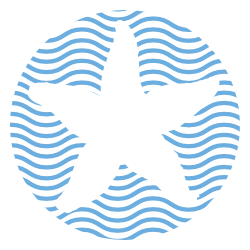¿Hay pellets en las playas de Menorca?
2024 has begun with the news of a "white" tide that is invading the beaches of northern Spain: it is about the massive arrival of pellets due to the fall into the sea of at least one container containing 1,000 bags with these microplastics to the coast of northern Spain. Spain.
Undoubtedly, this is an incident with serious environmental consequences for these territories, but pellet pollution is a constant occurrence on the Balearic coast.
Presence of pellets on the beaches of Menorca
On the beaches of Menorca there are also pellets and, we can say that many of them. According to studies carried out by the organizations Surfrider Foundation Europe, Good Karma Projects and Per la Mar Viva, densities of more than 6,000 pellets per square meter have been estimated at Cavalleria beach.
In addition to this study, other analyses carried out by the GOB Menorca with the citizen science project of Microplastic watchers point out that beaches such as Algaiarens could contain half a million microplastics, not counting particles accumulated in the dune system.
The organization 0 Plastic Menorca in its 0 Plastic Menorca Diving Expedition 2023 collected in just over 3 days, more than 4,000 microplastics, with pellets being the protagonists.
Where do the pellets that arrive in Menorca come from?
Although the fall of containers can also be a cause of the presence of pellets on the Balearic coast, a study by Surfrider Foundation Europe and Good Karma Projects points out that the arrival of pellets in Menorca is due to the leakage of pellets from the Tarragona petrochemical complex through leaks from the storm drain system. In episodes of heavy rainfall, these microplastics migrate from the complex to the Riu Francolí basin and part of the Rieras Meridionales basin. In conditions of westerly and northwesterly winds, the pellets head out to sea and end up reaching the coast of Menorca.
What can we do to combat this serious environmental problem? Discover the initiatives underway in Menorca
On the island, there are multiple actions aimed at better understanding the magnitude of the problem and others aimed at removing these small plastics from the beaches.
Per la Mar Viva, GOB Menorca and the Menorca Plastic Free Alliance participate in the project Surfing For Science, a project to assess microplastic pollution in the coastal area, with the collaboration of citizens who collect scientific samples by paddle surfing. In 2024, samples are being collected by volunteers in the areas of La Vall and the port of Addaia.
The GOB Menorca with the citizen science project of Microplastic watchers has been analysing the presence of micro and mesoplastics on the beaches of Son Bou and Algaiarens on a monthly basis for more than 2 years.
In relation to the removal of microplastics, the Menorca Plastic-Free Alliance, thanks to the support of the Ministry of Social Rights and Agenda 2030, has built two trommels – large cylindrical strainers – that are offered to entities, individuals, companies and schools to carry out microplastic clean-up days. Likewise, with the aim of making citizens better understand the problem, they have also created a display (counter) that allows them to easily visualize what microplastic pollution consists of, as well as containers where the plastics collected with the trommels are displayed. Any interested entity can request the Menorca Plastic Free Alliance to have this counter for a limited time.
On the other hand, the organization 0 Plastic Menorca, through several initiatives such as its 0 Plastic Menorca Diving Expedition, also collects these smaller plastics while working to raise awareness in collaboration with experts and local entities.
What can we do to reduce pellet pollution?
The most effective way to reduce pellet pollution is to reduce the use of plastic, especially single-use plastic, at all possible levels:
- Governments
Legislating to effectively remove unnecessary plastics, especially those present in the food sector, in addition to promoting reuse systems.
- enterprises
As for companies, on the other hand, they can analyse their plastic consumption and assess where they can improve, and translate these objectives into a policy of plastic reduction and environmental responsibility.
- citizenship
Citizens must join forces and reject products packaged and wrapped in plastics, thus creating a "plastic free" demand to which companies are forced to respond.



